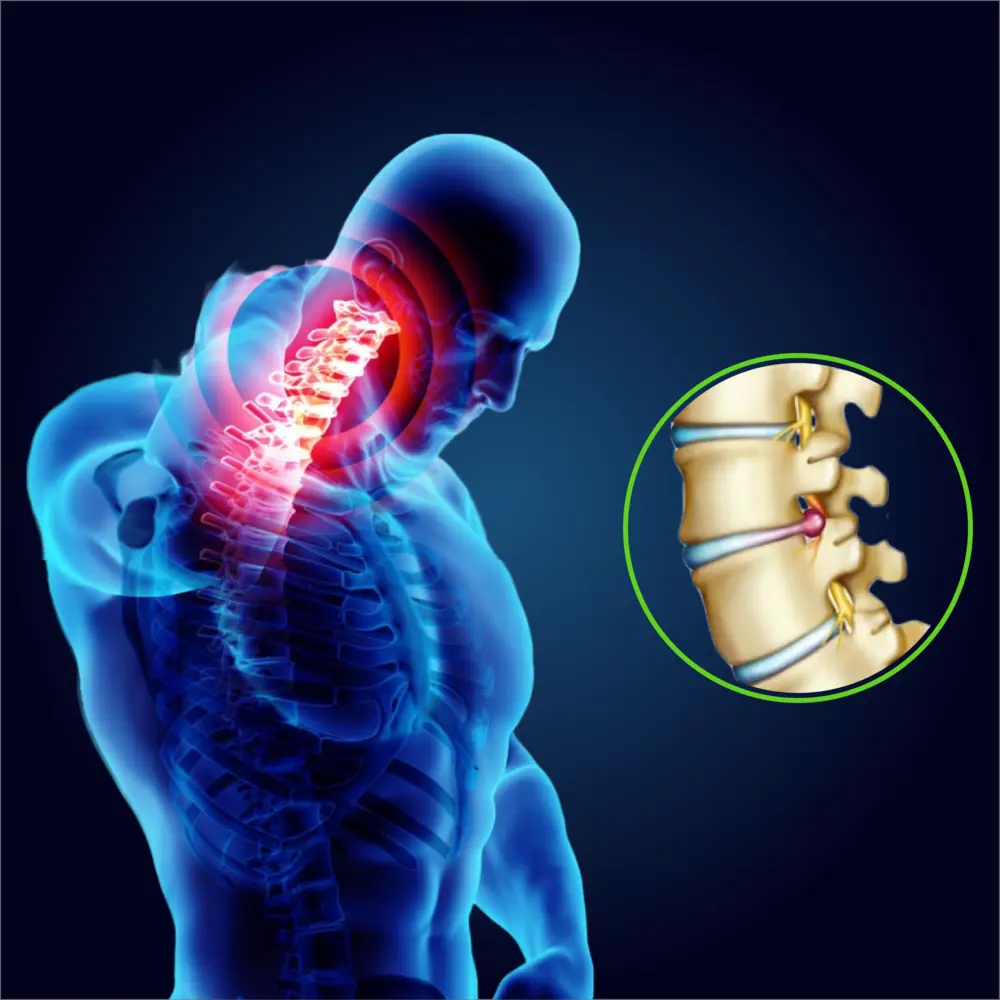SPONDYLOSIS
Symptoms
Causes
Treatment
Symptoms
Spondylosis is the most common form of spine bone degeneration that begins to affect people from their middle-age onwards. Spondylosis is usually asymptomatic. Symptoms show up when a bone spur pinches a nerve, or simply begins with pain and stiffness. These symptoms include:
- Stiffness in the neck and back
- Pain in the arms and shoulders Also in lower back and legs
- Difficulty moving the neck and back
- Headaches and dizziness
Sometimes, the condition develops into cervical myelopathy and shows up as:
- Numbness and tingling in the limbs when the nerve is pinched
- Loss of bladder and bowel movement (Cauda Equina syndrome)
- Lack of co-ordination
- Difficulty walking
- Difficulty in balancing
- Weakness in hands and foot muscles.
Causes
Spondylosis is caused primarily by:
- Bone and muscle degeneration
- Disc generation: This causes bone spurs that add friction to spinal movements
- Poor posture and sitting incorrectly
- Spinal injury or partial disc dislocation
- Sedentary lifestyle
Treatment
Spondylosis cannot be cured but milder cases can be managed with conservative treatment which includes:
- Medication
- Physical therapy
- Spinal Decompression using Vax-D treatment
Advanced pain management involves:
- Surgery: Only recommended in cases not responding to conservative management and / or having neurological deficit

